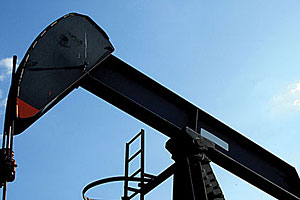
|
In a remarkably specific intermediate term projection, the U.S. Energy Information Agency forwarded a comprehensive outlook for the next two years as follows:
- Crude oil and product prices: The startup of the new Cushing market link pipeline to the Gulf Coast, as well as strong Midwest refining runs helped reduce oversized oil inventories at the Cushing, Okla., storage hub to the lowest level in two years. The EIA expects upcoming strong U.S. crude oil production to stabilize West Texas Intermediate prices at a $95 per barrel average for 2014.
- Crude oil supply and demand: Over the next two years, U.S. refining capacity and crude oil imports to refineries are expected to expand as refineries prepare to process the light crude from domestic production. The U.S. Information Agency expects such input to reach 15.6 million barrels per day by 2015. Despite unusually bad weather during 2014's first two months, the resultant slowdown will be overcome by accelerated well completions. While the celebrated Bakken formation in North Dakota and Montana’s production fell in December, it was expected to reach one million barrels per day by March and start to exceed this record level later in the year.
- China is expected to generate a record additional petroleum demand of 400,000 barrels per day this year as consumption reaches high gear. However, Japan and Europe are forecast to lead a decline among major industrialized nations as a group, falling by 150,000 and 60,000 barrels per day, respectively.
- Natural gas: U.S. natural gas inventories will end the heating season below one trillion cubic ft. for the first time since 2003 because of extraordinary natural gas withdrawals this winter to meet elevated heating demand. The EIA expects growing natural gas production, plus only moderate gas demand from the electric power sector to allow a major build in natural gas stocks during the April through September injection season.
- Coal: Despite predictions of its demise, the EIA is expecting a 3.2% growth this year, spurred by record coal exports exceeding 100 million metric tons for the fourth year in a row.
- Electricity: Because of extreme cold weather, subsequent power-generation totals have increased 5% so far this year in the Eastern U.S. Total natural gas-fired power generation will wind up even with last year. With natural gas prices rising, coal actually increased its percentage of power-generating utility usage, with a 2% February 2014 natural gas reduction in the Eastern U.S., to 23.3% of the total as compared to February 2013.
- Renewables: According to the EIA, wind power is expected to account for nearly 5% of total U.S. electricity generation by 2015 despite the lapse of previous federal subsidies at the end of 2013.
Oil/gas distribution benefits from rail setup
A recent Wall Street Journal roundup regarding the national distribution of oil and natural gas enunciated the fact that fossil fuel from fracking’s rail distribution is proving to be advantageous to a massive multi-state piping system.
Dwelling on the Bakken Shale, the poster child of today’s embryonic fracking outburst, the use of a multifaceted rail system has been venerated as a medium for the increasing flow of oil and natural gas emanating from North Dakota’s near one-million-barrel-per-day production.
Despite concern over periodic accidents that have made the headlines in media coverage, the plans for a massively expanded piping system may be mitigated by the unexpected success attributed to the more flexible and readily available rail transportation that has kept Bakken and other shale developments from backing up due to lack of piping system availability. The following are the main reasons cited for this shift:
- Although rail is a more expensive way to transport crude oil than pipelines, its availability to America’s most nearby refineries keeps the rapidly expanding production from backing up. This allows production from particular shales to be ferried to those locations where it can fetch the highest prices. Statistics emanating from the North Dakota pipeline authority have indicated a roaring surge by rail amounting to 1.4 million barrels per day by late 2016 with once leading pipeline distribution lagging at 1 million barrels. This expected widening spread has accelerated since the beginning of 2014.
- Trains also can reach refineries that pipelines can’t get to. This means North Dakota’s low-sulfur type, garnering higher prices at this time, can compete with East Coast refineries that have had to import Brent Crude from overseas to meet their sales demand. This not only gives rails a $30 spread (minus $10-$15 shipping cost) vs. foreign imports, but also is reliable in its ongoing shipments. Even shipping to the West Coast results in cheaper rail-shipped prices, as neither the Far West nor the East are expecting pipeline developments in the near future.
- This turn of events already is impacting the overall pipeline projects now working their way from project drawing boards to actual implementation. Train operators emanating out of North Dakota moved nearly three-fourths of all December oil pumped in North Dakota last year while pipelines slumped by 3%.
- Preliminary surveys have noted that previously planned nationwide piping systems crossing the nation will be reassessed as supplemental to those pipelines already existing, or which can be carried into areas where rail systems are actively operating in extension of existing pipelines.
What may effectively militate against the overreach of rails are safety, cost, plus congestion and the determination of hazards that may face public opposition in particular metropolitan areas. Several outbreaks of oil fires have negatively impacted public opinion.
However, when looking past the immediate future, a nationwide network of privately financed piping systems will provide the ultimate answer to America as the world’s No. 1 provider of crude oil, its derivatives and liquid natural gas.
Gulf Coast becoming LNG epicenter
Although the Gulf Coast (Louisiana, Mississippi, Alabama and the Florida Panhandle) is best known for oil refineries, tourism and offshore deep-sea drilling, this area is on the verge of becoming a global liquid natural gas center and the United States’ chief launching pad for global exports.
The current energy boom’s expansion is in the process of building both gas liquefaction capacity, as well as providing multiple terminals for maximum exports all over the world. Having been given the green light by the U.S. Energy Agency, the combination of natural gas conversion, as well as worldwide shipping will mean hundreds of thousands of new jobs along the Gulf Coast within the current decade.
With worldwide liquid natural gas exports expected to more than double or triple in the next quarter-century (according to the EIA), both the pressure of substantial liquefaction facilities as well as multiple export terminals will put the Gulf of Mexico’s American coast line in the catbird seat with regard to the global centerpiece of LNG total activities.
Up to a dozen long-term deals, each worth billions of dollars, already have been signed by American natural gas producers with businesses in China, Japan, Taiwan, Spain and France. Also, the Federal Energy Agency already has authorized relevant companies to export up to 8.5 billion cubic ft. per day of LNG, about 13% of current daily production.
With the Gulf Coast area rapidly becoming the LNG export epicenter, its combination of shipping terminals, as well as readily available regional natural gas conversion capabilities will provide a previously unexpected gateway in an area better known for its tourism and fishing industries.
The major problem in the making at this time is general and skilled labor availability. But with high-paying construction jobs the chief beneficiary, it’s expected that the national employee surplus of these jobs will provide ready-made drawing power from around the nation.
Expert analysts predict $64 billion will be spent to build at least seven LNG conversion facilities in the upcoming two or three years. In just two years, the number of pipefitters, welders, electricians and other skilled workers will grow from 68.1 million required man hours now to 134.3 million by 2016, an increase of 55%. Current welders, electricians and other skilled workers will increase from 62,000 to 103,000, the analysts predict.
If most of these predictions come to pass, another major chip of American industrial revolution will have taken place in a generally unexpected area, previously known for its deep-sea drilling proximity, but primarily unknown for energy development and the billions of revenue dollars that will flow into the coffers of this retirement, fishing and tourism arena.




